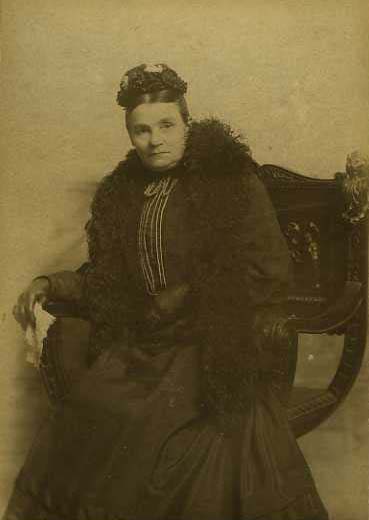In 1854, the first known police matrons (also called jail matrons) were hired by New York City to search and guard female prisoners, but they were civilians with no law enforcement powers.
Sarah “Sadie” Hill (pictured) became the second police matron in Davenport, Iowa, hired in 1893. She married George Washington Hill in Fairfield, Iowa. The couple had one son, Luther, before George died of a heart attack at the young age of 43, leaving Sarah Hill a widow.
We have recently completed conservation of a collection of Matron Hill’s affects sent to us by The National Law Enforcement Museum (http://www.nleomf.org/museum/). Among the artifacts are commemorative ribbons and Hill’s “widow’s weeds.” To the right is a photo Matron Hill in the very weeds we worked on.
 We were very interested in the term “widow’s weeds” so we looked into it.
We were very interested in the term “widow’s weeds” so we looked into it.
One might assume that “widow’s weeds” must be connected in some convoluted fashion to the sort of weed one finds in the garden. However, this assumption is incorrect. “Weeds” the plants and “weeds” the mournful getup worn by widows in days of yore are entirely separate words with unrelated origins.
The plant kind of “weed” comes from the Old English word “weod,” which meant “grass, herb or weed.” “Weeds” aka “mourning clothes,” comes from a very old Germanic root meaning “clothing.” and when this “weed” first appeared in English around A.D. 888, it was used in the singular to mean simply “an article of clothing”– kind of like “threads.”
By about 1297, “weed” or “weeds” meant a style of clothing typical of an occupation or station in life. One might speak of a priest’s “weed” or a beggar’s “weeds,” for instance. The phrase “widow’s weeds,” denoting the black veils and other accouterments of deep mourning, first appeared around 1595, and is the only use of “weeds” in this sense still commonly heard in English.
